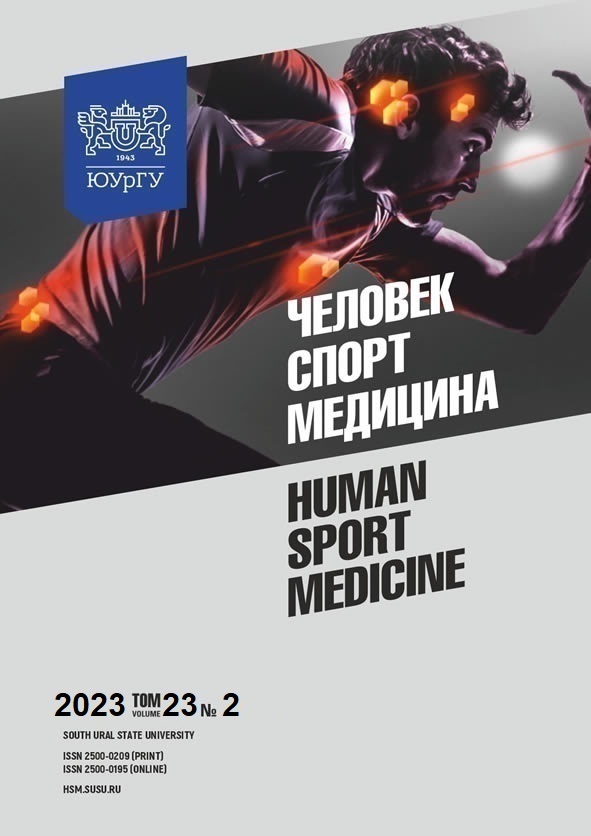METABOLIC STATUS AND BODY COMPOSITION OF STUDENTS IN A SPECIAL MEDICAL GROUP AT THE BEGINNING OF THE ACADEMIC YEAR
Abstract
Aim. This paper aims at evaluating the metabolic status and body composition of 1–3-year students in a special medical group at the beginning of the academic year. Materials and methods. The study took place at the Institute of Sport, Tourism and Service, South Ural State University (National Research University). The study sample involved 1–3-year students with III–IV health categories (a special medical group, Annex 1, Order of the Ministry of Health of Russia dd. 01.03.2016 No 134н). Body composition and metabolic measurements were performed with the Tanita BC 613-S segmental body composition monitor. This monitor measures fat %, fat-free mass (FFM), body mass index (BMI), basal metabolic level (BML), bone mass (BoM), total body water % (BW), relative visceral fat (VF), and metabolic age. The statistical processing of the results obtained was performed with IBM SPSS Statistics v. 23. Results. The results obtained allowed us to identify two main factors with a total dispersion of 87.68% in female students and 88.16% in male students. The first factor included the parameters of fat metabolism, and the second factor included the parameters of protein metabolism. Conclusion. The results obtained contribute to the development of a rational program of physical education in a special medical group.
References
References on translit
Copyright (c) 2023 Human. Sport. Medicine

This work is licensed under a Creative Commons Attribution-NonCommercial-NoDerivatives 4.0 International License.















